Part 2 of 2 Parts (Please read Part 1 first)
Oklo’s proposed thirteen thousand-square-foot Aurora powerhouse, featuring a fifteen-megawatt fission reactor, is smaller than conventional nuclear power plants and looks more like a sleek ski chalet than the Cold War-era plants with their iconic curved towers. The plant is going to be built at the Idaho National Laboratory (INL) which is a research facility where Oklo has been given an Energy Department grant to test recycling nuclear waste into new fuel. DeWitte says the design is safer that conventional power reactors, citing the use of liquid metal as a coolant instead of water.
The nuclear power industry hasn’t significantly expanded its share of the U.S. energy mix for decades. It has limped along in the face of popular opposition fueled by infrequent but devastating accidents like those in Chernobyl, Ukraine, in 1986 and in Fukushima, Japan, in 2011. Even the newest nuclear plants still generate waste that can remain dangerously radioactive for centuries. This raises the need for effective disposal or recycling efforts like the one Oklo is testing.
As the climate crisis accelerates, fifty seven percent of Americans now support expanding nuclear energy according to a Pew Research survey last year. Nuclear power currently makes up only nineteen percent of the nation’s overall energy generation in the U.S. There are ninety-three commercial nuclear power reactors operating today in the U.S. This is down from a peak of one hundred and twelve in 1990. By one estimate, up to eight hundred gigawatts of new nuclear generated electricity will be needed by 2050 to meet current green energy targets.
But as tech firms embrace AI, many data centers are already struggling to add capacity fast enough to remain affordable, with data center rents jumping nearly sixteen percent between 2022 and 2023 alone. The demand crunch is one reason major industry players have been increasing their nuclear investments.
Microsoft signed a deal last summer with Constellation, a top nuclear power plant operator, to supply nuclear-generated electricity to its Virginia data centers. In 2022, Google took part in a two hundred and fifty-million-dollar fundraising round for the fusion startup TAE Technologies. In late 2021, Amazon founder Jeff Bezos and other investors raised over one hundred and thirty million dollars for Canadian nuclear company General Fusion.
Ross Matzkin-Bridger is a senior director at the Nuclear Threat Initiative, a nonprofit group focused on reducing nuclear and biological risks. He said that for tech firms, it makes sense to tap directly into nuclear plants “instead of sourcing electricity from the grid.” In addition to being clean, he mentioned that many recent nuclear projects are also compact. “You can fit a lot more energy per acre in nuclear energy than you can with any other technology.” he said.
Ayan Paul is a research scientist at Northeastern University who studies AI. He said that beyond Silicon Valley, “big investment firms are actually starting to believe that this is going to take off. People have started to believe that these kinds of energies are going to fuel our population.”
However, some experts warn that efforts to expand nuclear power shouldn’t be rushed, no matter how fast demand is growing.
Ahmed Abdulla is an assistant mechanical and aerospace engineering professor at Carleton University. He said, “We need nuclear power to get to a low-carbon future.” However, for engineering projects that have historically taken decades, the regulatory process needs to be a methodical one. He added that “There is a chance to make serious mistakes if we sprint to the goal.”
Blog
-

Nuclear Reactors 1375 – Oklo Is Working On Microreactors To Supply Electricity To AI Server Farms – Part 2 of 2 Parts
-
Nuclear News Roundup April 23, 2024
AI boom is great news for the nuclear power dreamers theregiater.com
Changes proposed to Pennsylvania’s nuclear emergency alert system mytwintiers.com
Realpolitik and Fake News Complicate Nuclear Deterrence globalsecurityreview.com
Voters, please think about the menace of nuclear annihilation washingtonpost.com
-
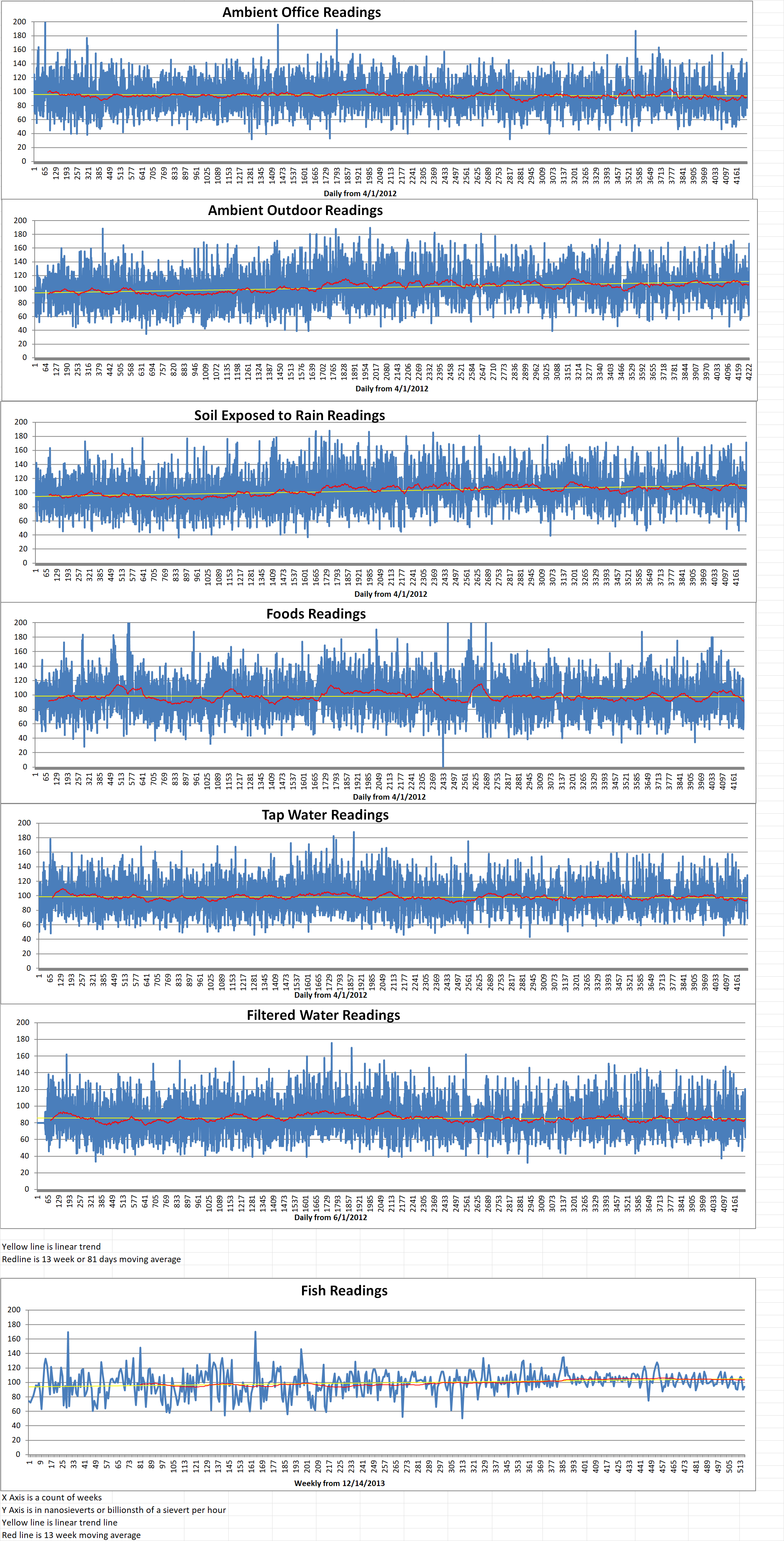
Geiger Readings for April 23, 2024
Ambient office = 77 nanosieverts per hour
Ambient outside = 128 nanosieverts per hour
Soil exposed to rain water = 131 nanosieverts per hour
Green onion from Central Market = 93 nanosieverts per hour
Tap water = 69 nanosieverts per hour
Filter water = 63 nanosieverts per hour
-
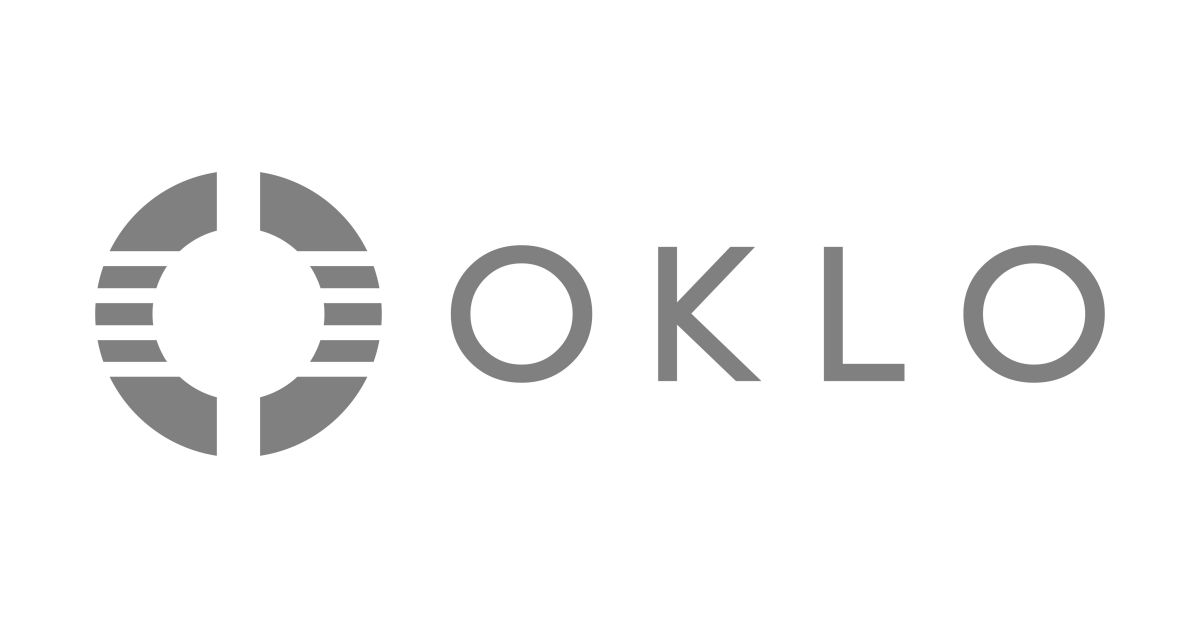
Nuclear Reactors 1374 – Oklo Is Working On Microreactors To Supply Electricity To AI Server Farms – Part 1 of 2 Parts
Part 1 of 2 Parts
Tech firms and Silicon Valley billionaires have been pouring money into nuclear energy for years. They have pitched sustainable power sources as crucial to the green transition. Now they are promoting artificial intelligence.
While generative AI has grown at lightning speed, nuclear power projects are heavily regulated and usually advance at a very slow pace. That’s raising questions about whether advances in nuclear energy can cut emissions as quickly as energy-hungry AI and other fast-growing technologies are adding to them.
Sarah Myers West is managing director of the AI Now Institute, a research group focused on the social impacts of AI. She said, “If you were to integrate large language models, GPT-style models into search engines, it’s going to cost five times as much environmentally as standard search.” At current growth rates, some new AI servers could soon consume more than eighty-five terawatt hours of electricity each year, researchers have estimated. This is more than some small nations’ annual energy consumption.
Myers West continued, “I want to see innovation in this country. I just want the scope of innovation to be determined beyond the incentive structures of these giant companies.”Oklo is one of the nuclear startups backed by Sam Altman who is the CEO of OpenAI. He has described AI and cheap, green energy as mutually reinforcing essentials to achieving a future marked by “abundance.”
In 2021, Altman invested three hundred and seventy five million dollars million in Helion Energy, a nuclear fusion startup that Altman chairs. He told an interviewer that last year Microsoft agreed to buy power from Helion starting in 2028. He added, “Fundamentally today in the world, the two limiting commodities you see everywhere are intelligence, which we’re trying to work on with AI, and energy.” Oklo, which Altman also chairs, is focused on the opposite reaction, fission, which generates energy by splitting an atom; fusion does so by merging atomic nuclei.
In rural southeastern Idaho, Oklo is working on the construction of a small-scale nuclear powerhouse that could fuel data centers like the ones OpenAI and its competitors need. However, the company also wants to supply mixed-use communities and industrial facilities. It is already contracted to build two commercial plants in southern Ohio.
Jacob DeWitte is the Oklo CEO and co-founder. As the U.S. moves toward wide electric vehicle adoption and decarbonization, he said that “the amount of energy we’re going to need to do that is huge. Also heating and cooking — if we want to electrify those processes, you’re going to need even more.”
Oklo has found getting regulators on board is more difficult than finding potential customers.
In 2022, the federal Nuclear Regulatory Commission (NRC), which oversees commercial nuclear power plants and materials, denied the company’s application for the design of its Idaho “Aurora” powerhouse. The NRC said that Oklo hadn’t provided enough safety information. In October of 2023, the Air Force rescinded its intent to award a contract for a microreactor pilot program to power a base in Alaska.
DeWitte said “You’ve got new physics, you have to use new models. You have to do all sorts of stuff that’s different than what they’re used to,” referring to the NRC. Oklo is now working to satisfy the requirements of regulators, he said, acknowledging agency officials must “do their independent job of ensuring this meets adequate safety requirements.”
Please read Part 2 next -
Nuclear News Roundup April 22, 2024
Ten-yearly overhaul begins at Bruce B vacuum building world-nuclear-news.org
The UN’s nuclear watchdog chief will visit Iran next week as concerns rise about uranium enrichment boston25news.com
Toxic sewage discharged at Chalk River nuclear lab cbc.ca
Alberta, Saskatchewan sign agreement to share nuclear energy information globalnews.ca
-
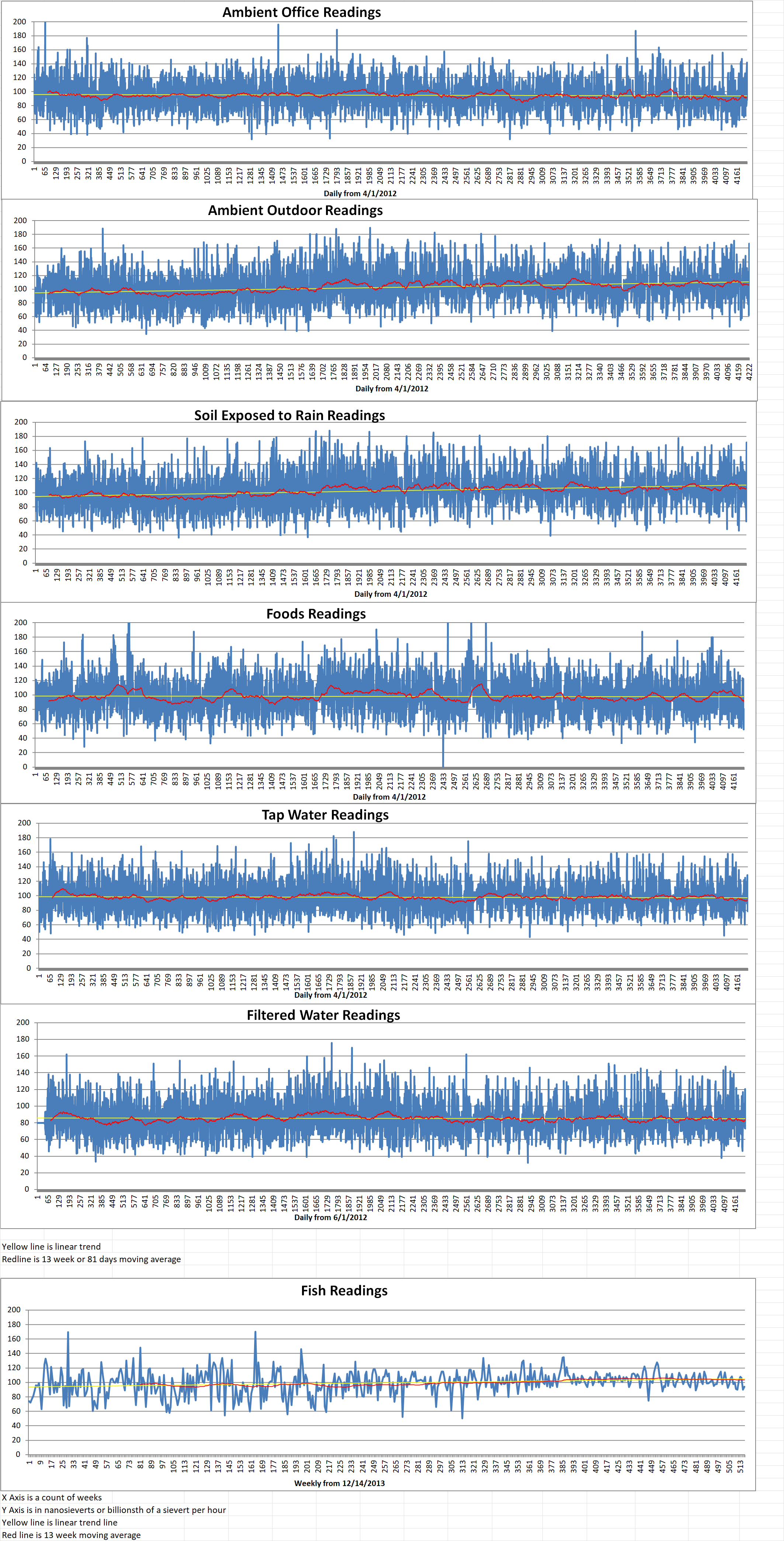
Geiger Readings for April 22, 2024
Ambient office = 88 nanosieverts per hour
Ambient outside = 167 nanosieverts per hour
Soil exposed to rain water = 171 nanosieverts per hour
Blueberry from Central Market = 80 nanosieverts per hour
Tap water = 79 nanosieverts per hour
Filter water = 73 nanosieverts per hour
-
Nuclear News Roundup April 21, 2024
Exclusive-UAE planning second nuclear power plant, sources say finance.yahoo.com
Poland’s nuclear program making good progress, says IAEA world-nuclear-news.org
Framatome launches expansion of Lynchburg site world-nuclear-news.org
Industria and Rolls-Royce SMR plans take step forward world-nuclear.news.org
-
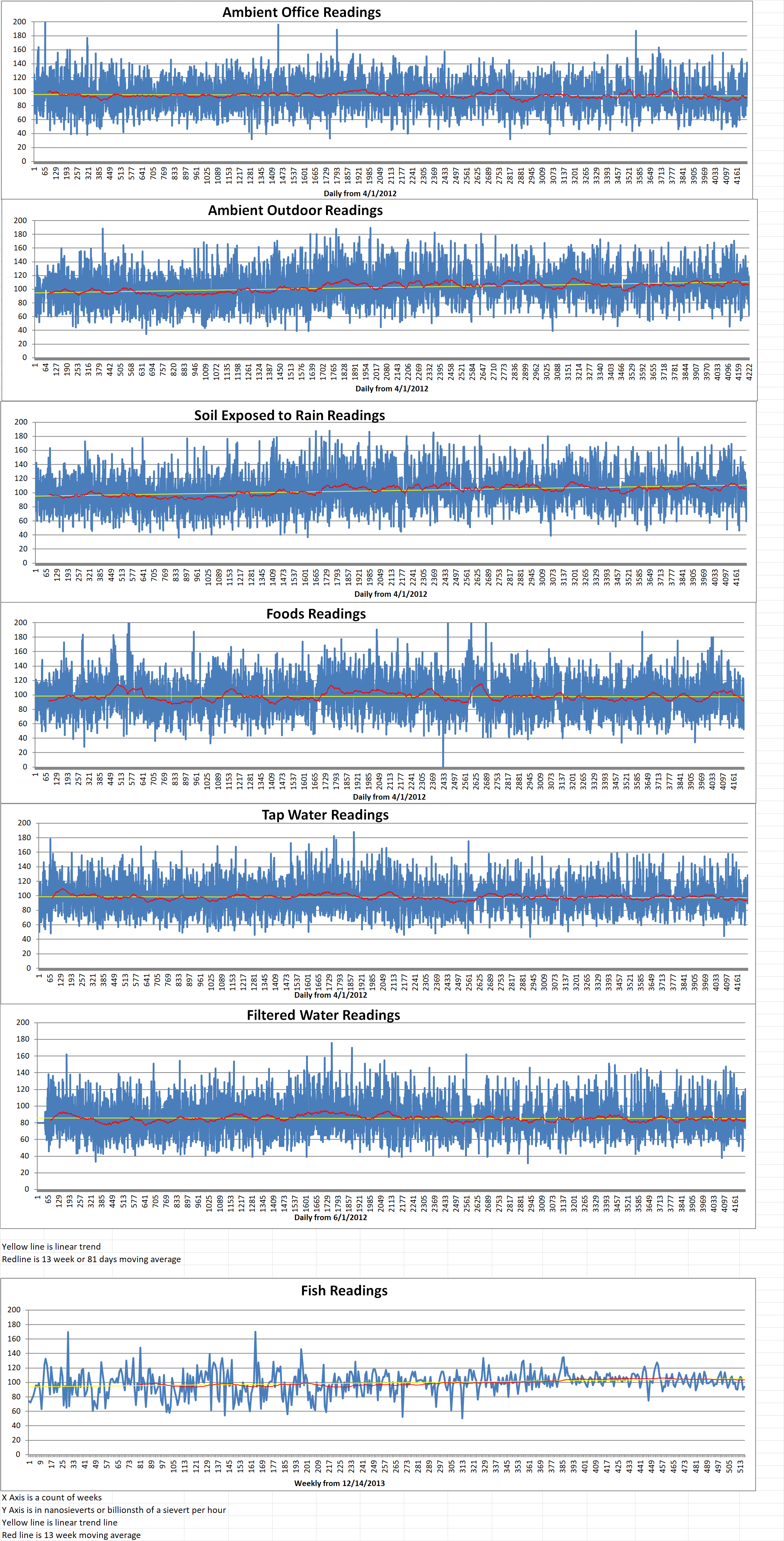
Geiger Readings for April 21, 2024
Ambient office = 120 nanosieverts per hour
Ambient outside = 100 nanosieverts per hour
Soil exposed to rain water = 100 nanosieverts per hour
Avocado from Central Market = 73 nanosieverts per hour
Tap water = 128 nanosieverts per hour
Filter water = 121 nanosieverts per hour
-
Nuclear News Roundup April 20, 2024
Indian Point oversight board, Holtec discuss decommissioning options of former nuclear plant fbherald.com
German opposition lawmakers grill ministers over nuclear phase-out yahoo.com
Risk of military incidents on Belarus-Ukraine border quite high: Lukashenko Aljazeera.com
Schneider partners with nuclear company Terrestrial Energy to commercialize small reactors datacenterdynamics.com
-
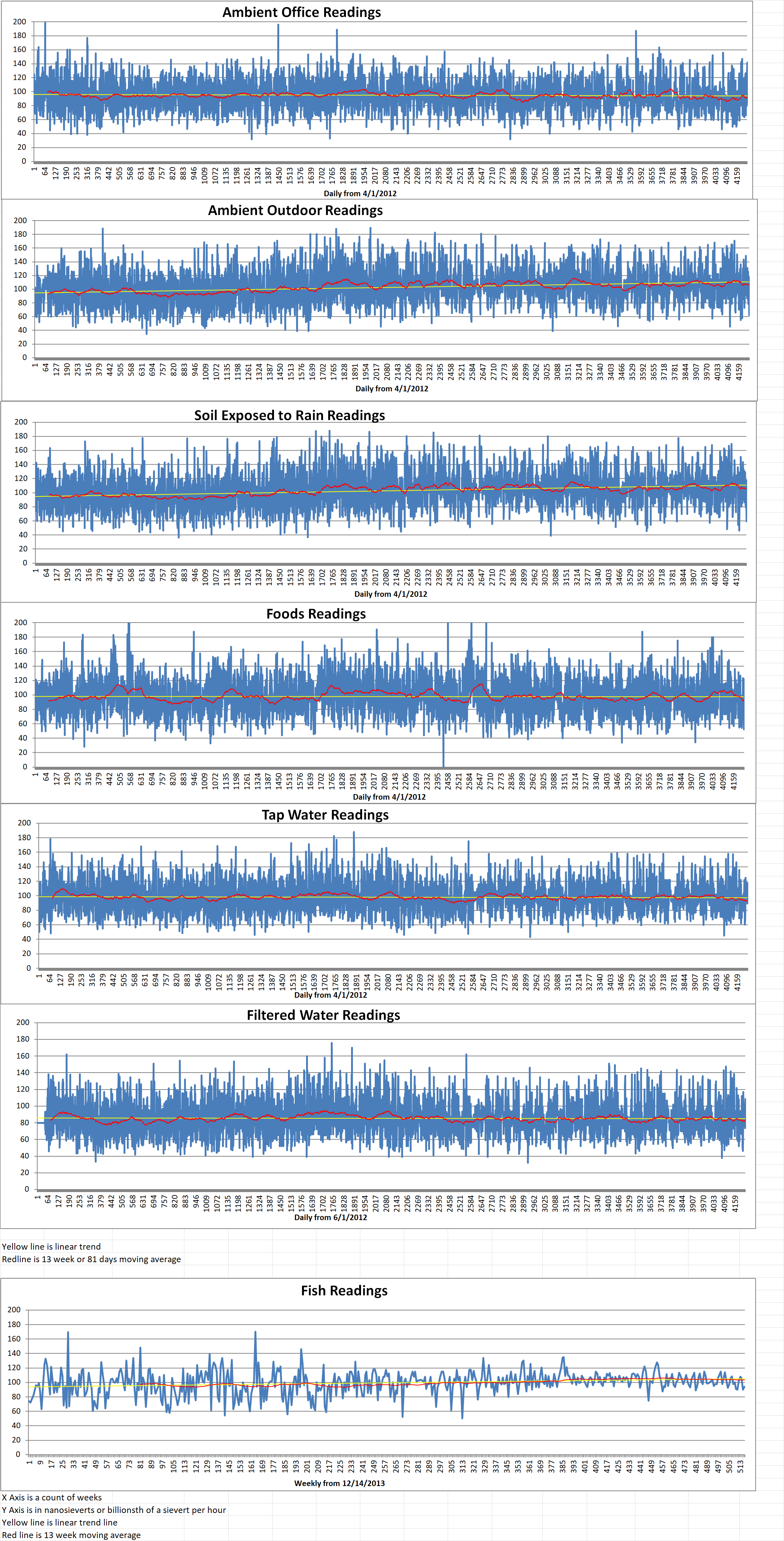
Geiger Readings for April 20, 2024
Ambient office = 142 nanosieverts per hour
Ambient outside = 62 nanosieverts per hour
Soil exposed to rain water = 59 nanosieverts per hour
Tomato from Central Market = 52 nanosieverts per hour
Tap water = 118 nanosieverts per hour
Filter water = 108 nanosieverts per hour
Dover Sole from Central = 94 nanosieverts per hour
